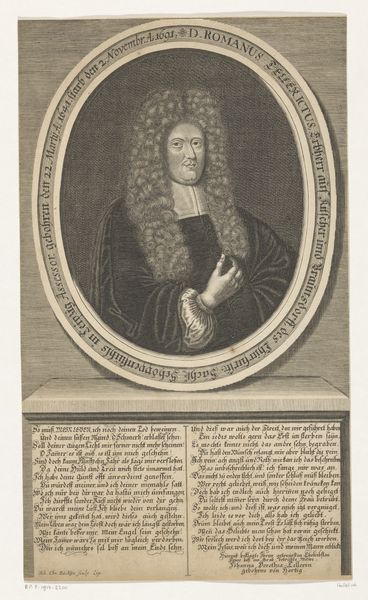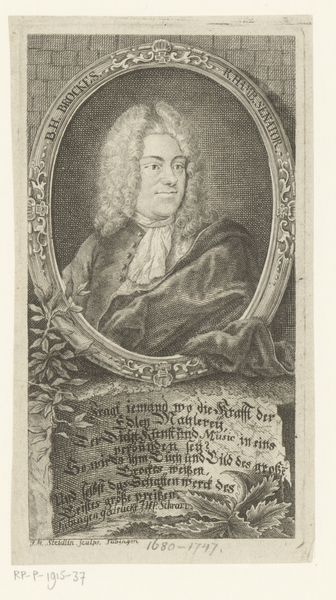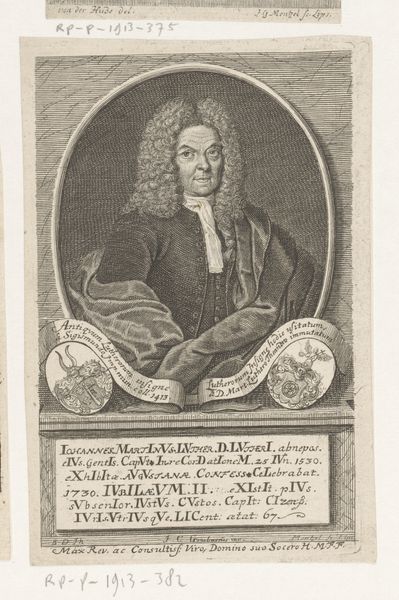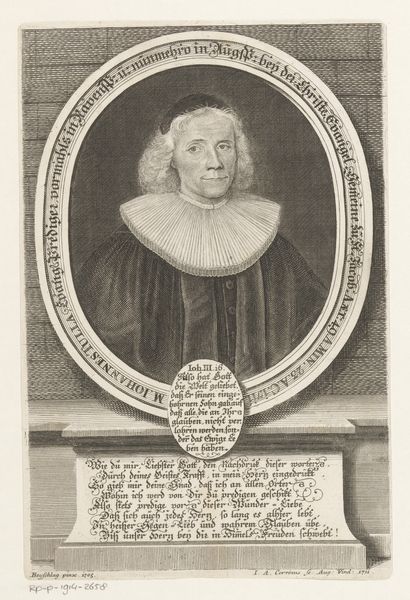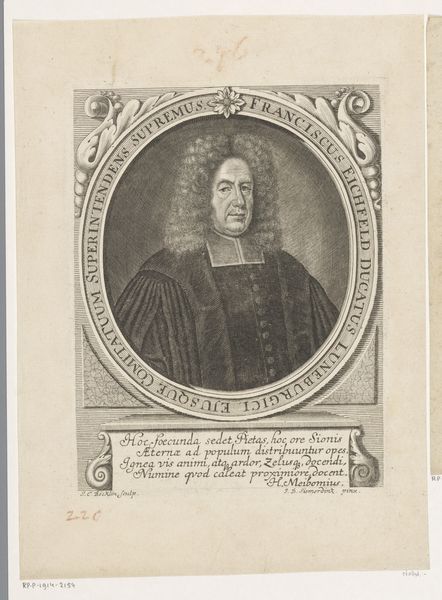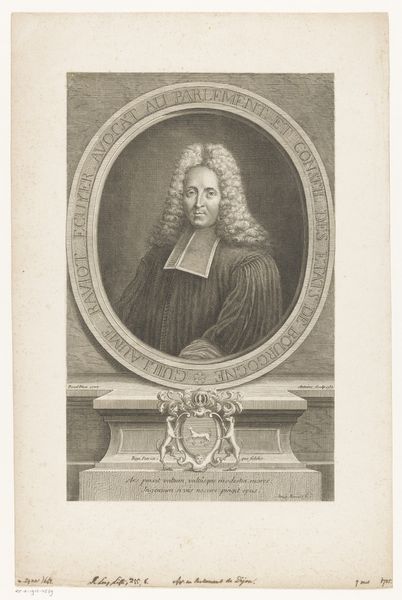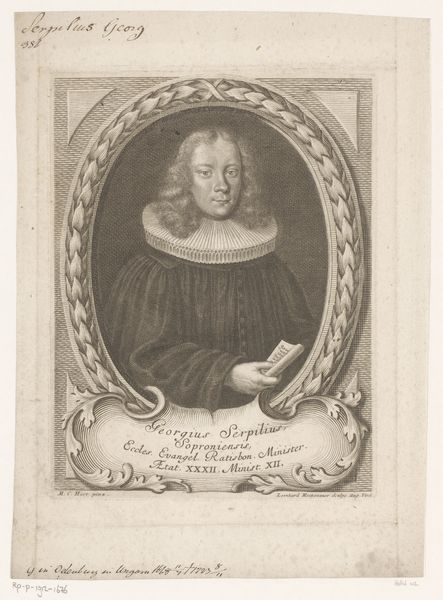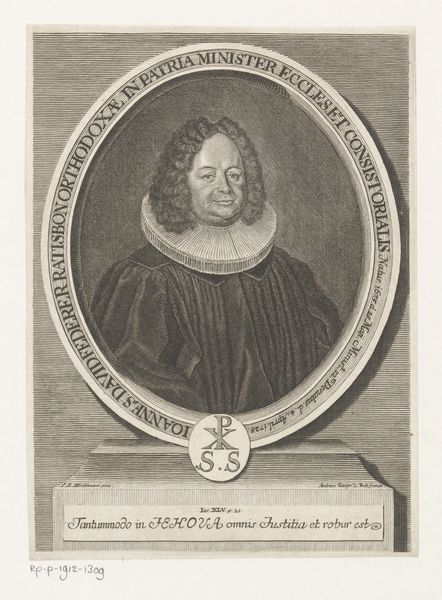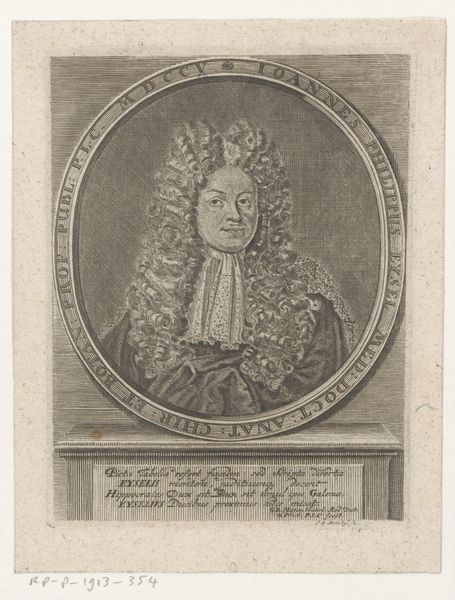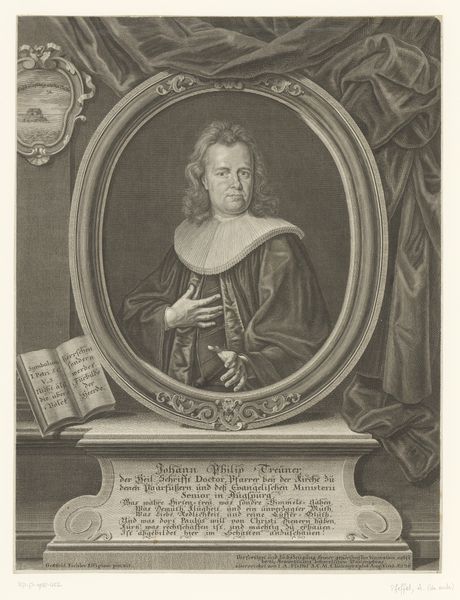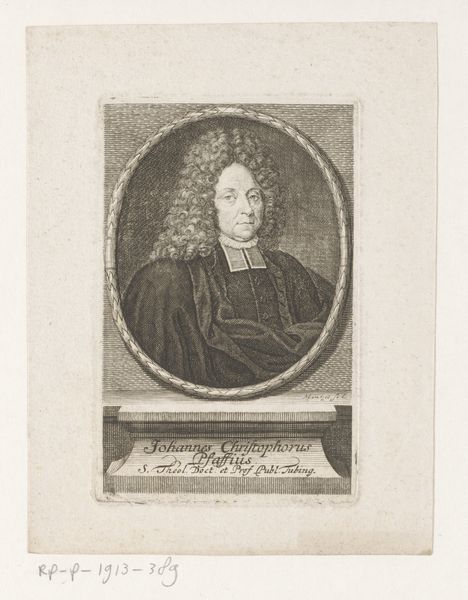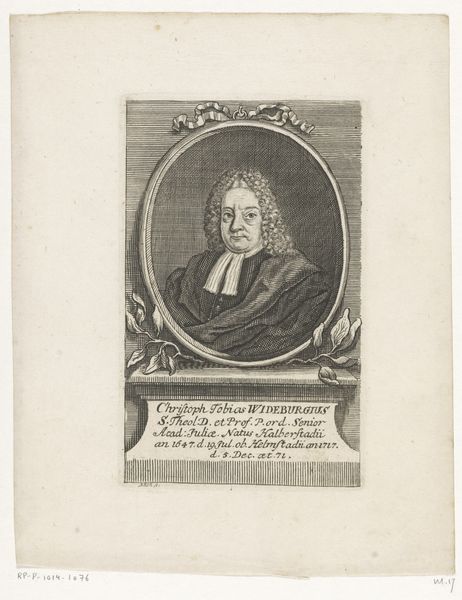
engraving
#
portrait
#
baroque
#
old engraving style
#
history-painting
#
engraving
Dimensions: height 187 mm, width 147 mm
Copyright: Rijks Museum: Open Domain
Curator: Here we have an 18th-century engraving titled "Portret van Michael Bahz." The level of detail the artist, Joseph de Montalegre, achieved with lines alone is impressive, isn’t it? Editor: It is! My initial reaction is that it feels both grand and strangely intimate. The subject’s expression draws me in. There is almost a confrontational element given the sitter stares directly at the viewer. Curator: Baroque portraits certainly aimed for that blend of grandeur and individualized representation. It’s interesting that you noted the direct gaze. Do you think it connects to notions of power, perhaps in the sitter presenting a desired persona of strength or authority? Editor: It makes me think about who had the privilege of representation then, especially as mediated through artists of Montalegre’s calibre. The text below the portrait – only decipherable via OCR for me! - might reveal something further regarding its initial viewers and reception. Is this a commissioned work intended to circulate in elite intellectual circles, cementing Bahz's place in that hierarchy? Curator: The presence of the books on the right may offer an indication here as it signifies Bahz's scholarship and social standing. He belonged to the “Gyml. Agidiani Norib. Coll.” based on the writing encircling the artwork. I wonder what this reveals about the academic background of both artist and sitter, particularly concerning knowledge transfer via engravings. Editor: Considering that many view the Baroque era through a gendered lens, given art production was a particularly patriarchal field during the 18th Century, it would be intriguing to discover the extent of impact of this portrayal on ideas related to gender roles and intellectual spaces at that time. Did Bahz’s intellectual circles embrace intersectional concepts, providing chances for broader societal critique? Curator: What a rich array of contextual inquiries! The fact that we're still pondering its social life highlights the ongoing importance of understanding artwork of this period. Editor: Exactly. Thinking about power structures surrounding artistic creation lets us investigate the complex tapestry of social and intellectual exchanges of the past and examine how gender or class might impact them.
Comments
No comments
Be the first to comment and join the conversation on the ultimate creative platform.
